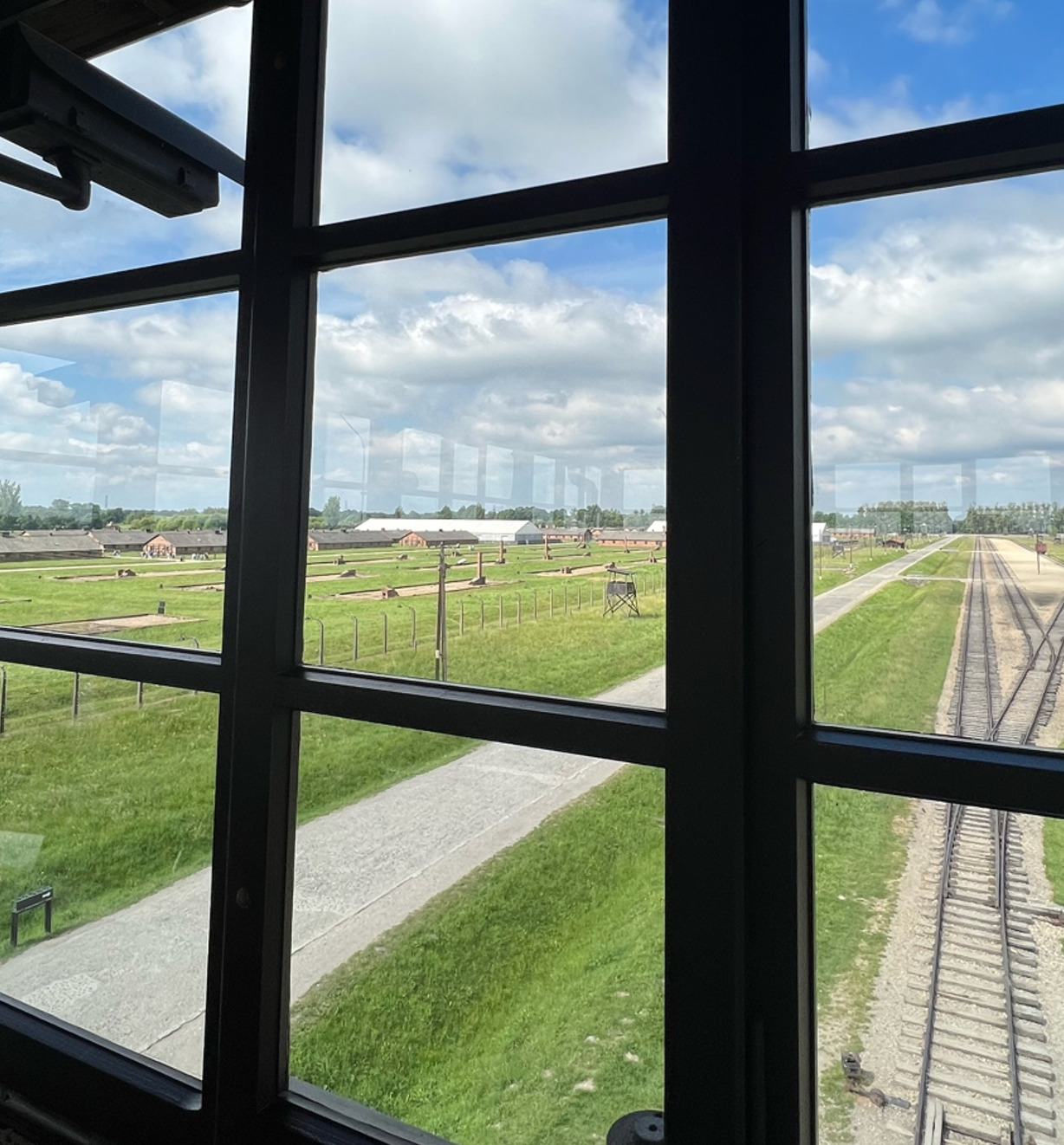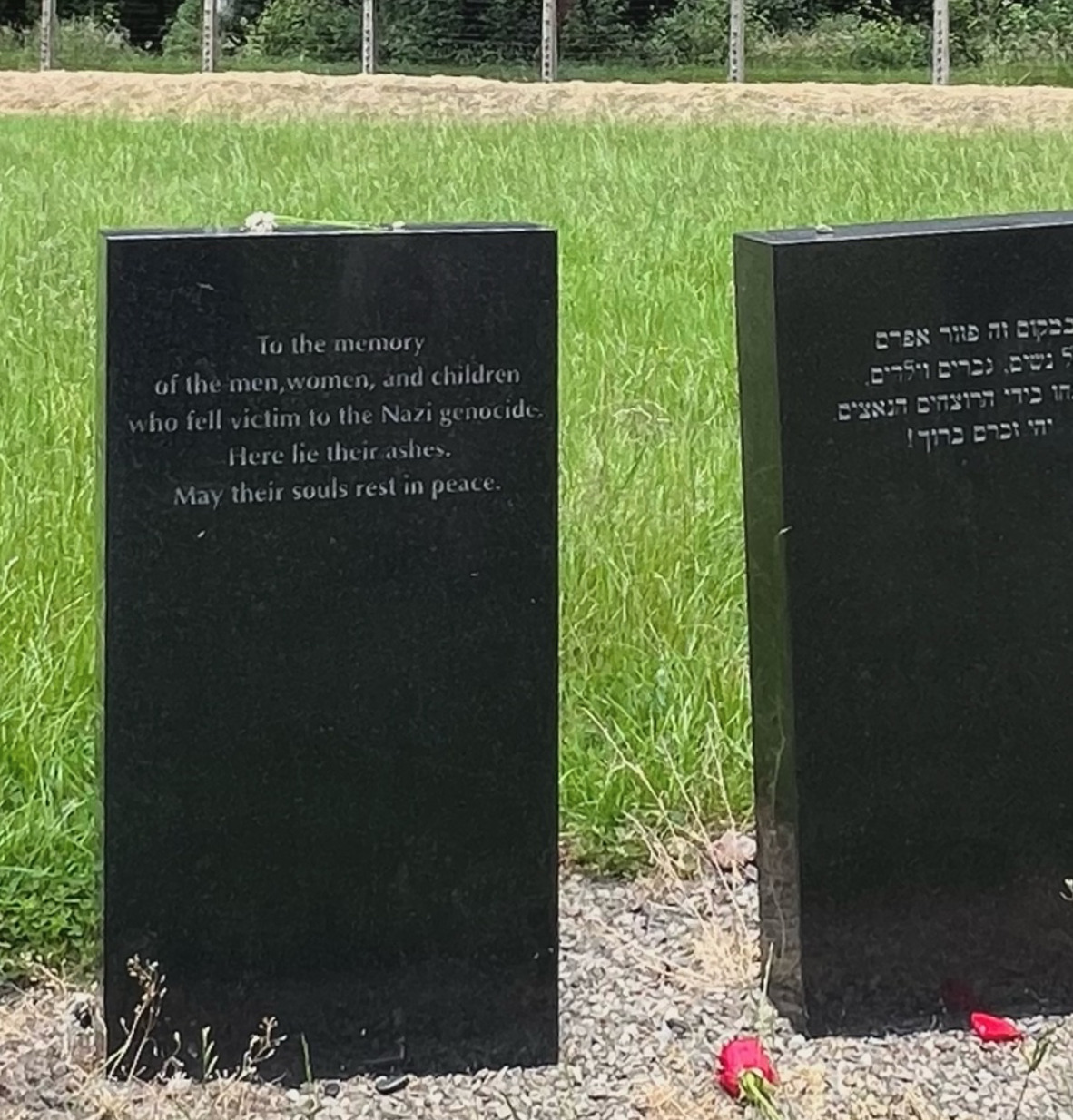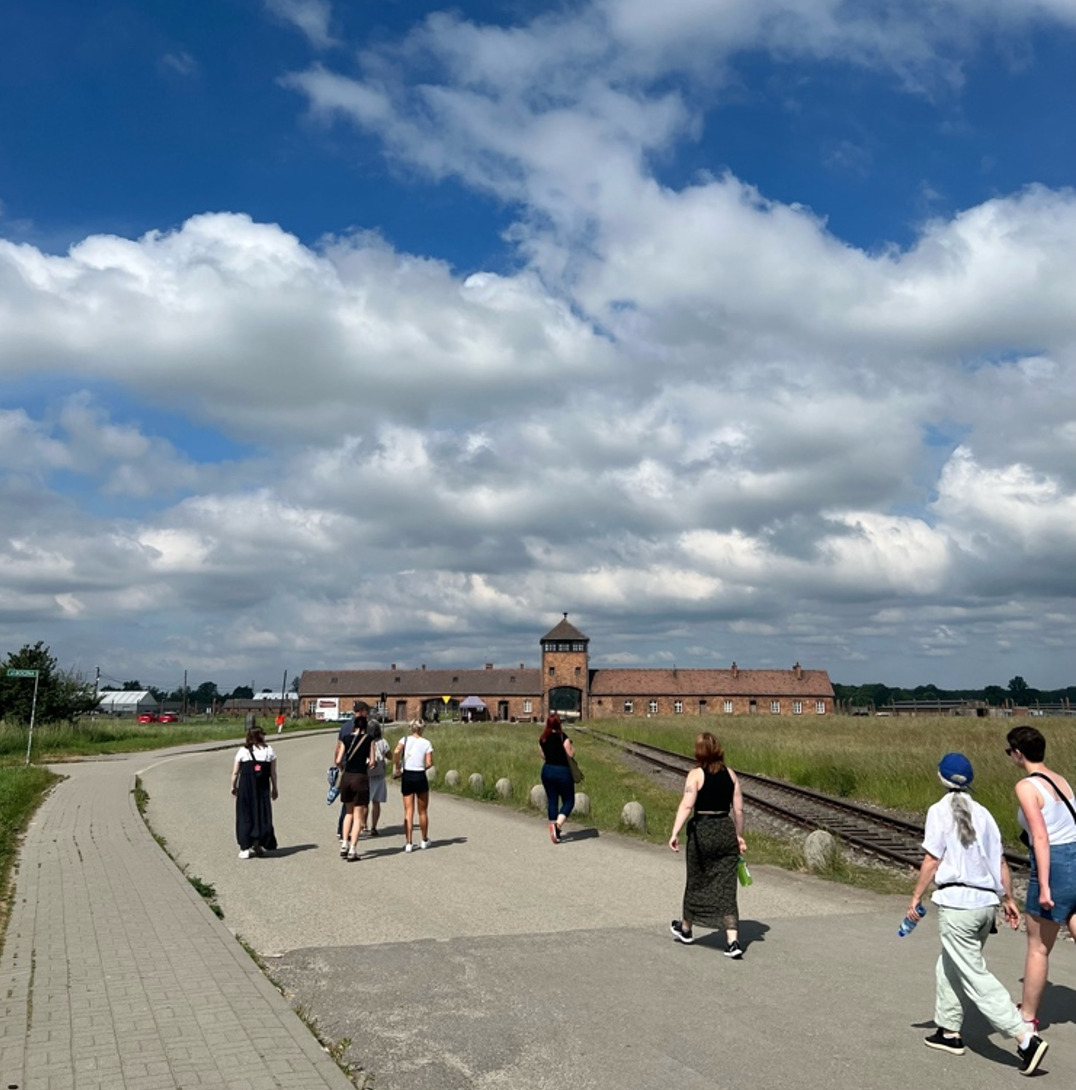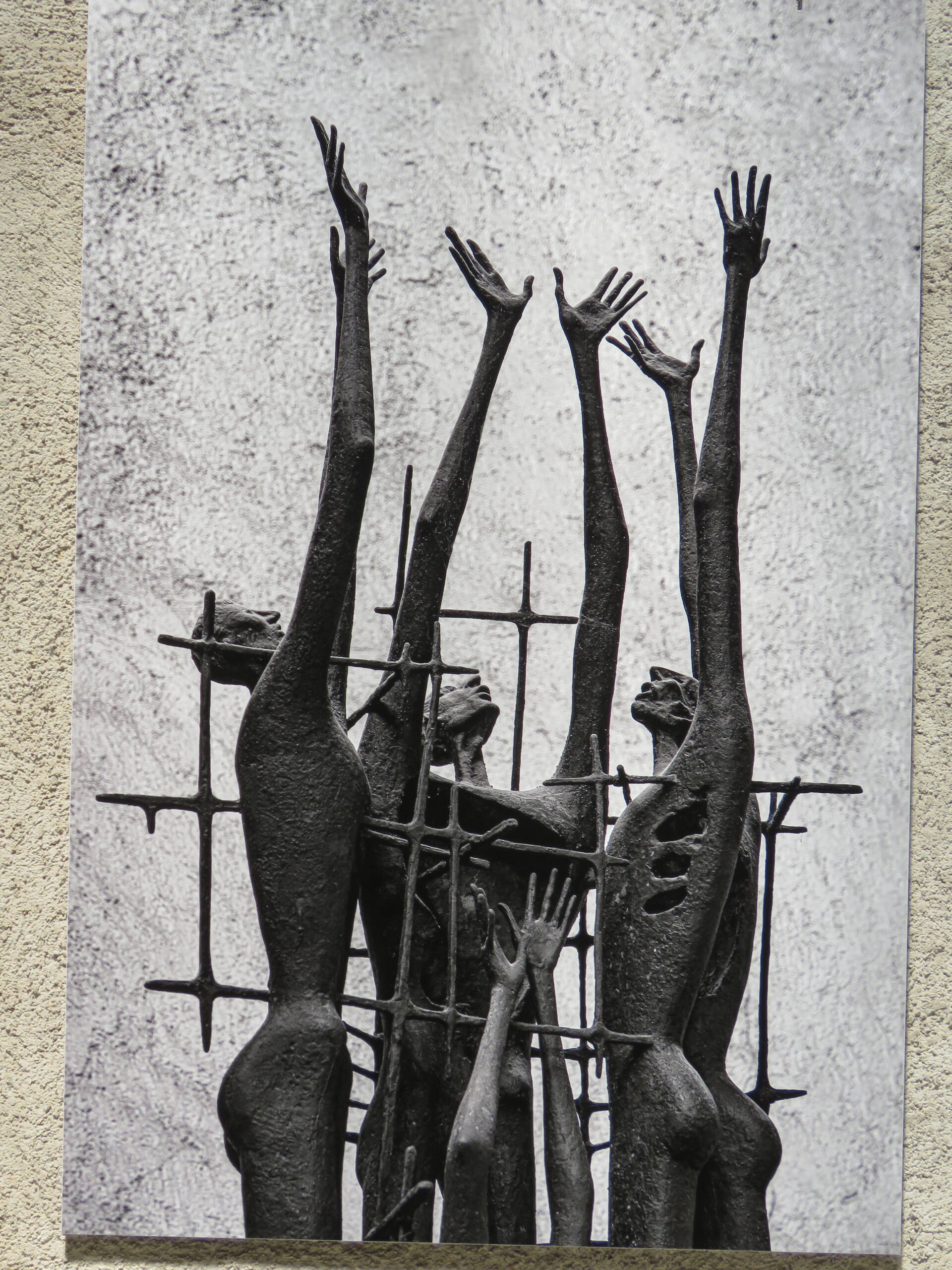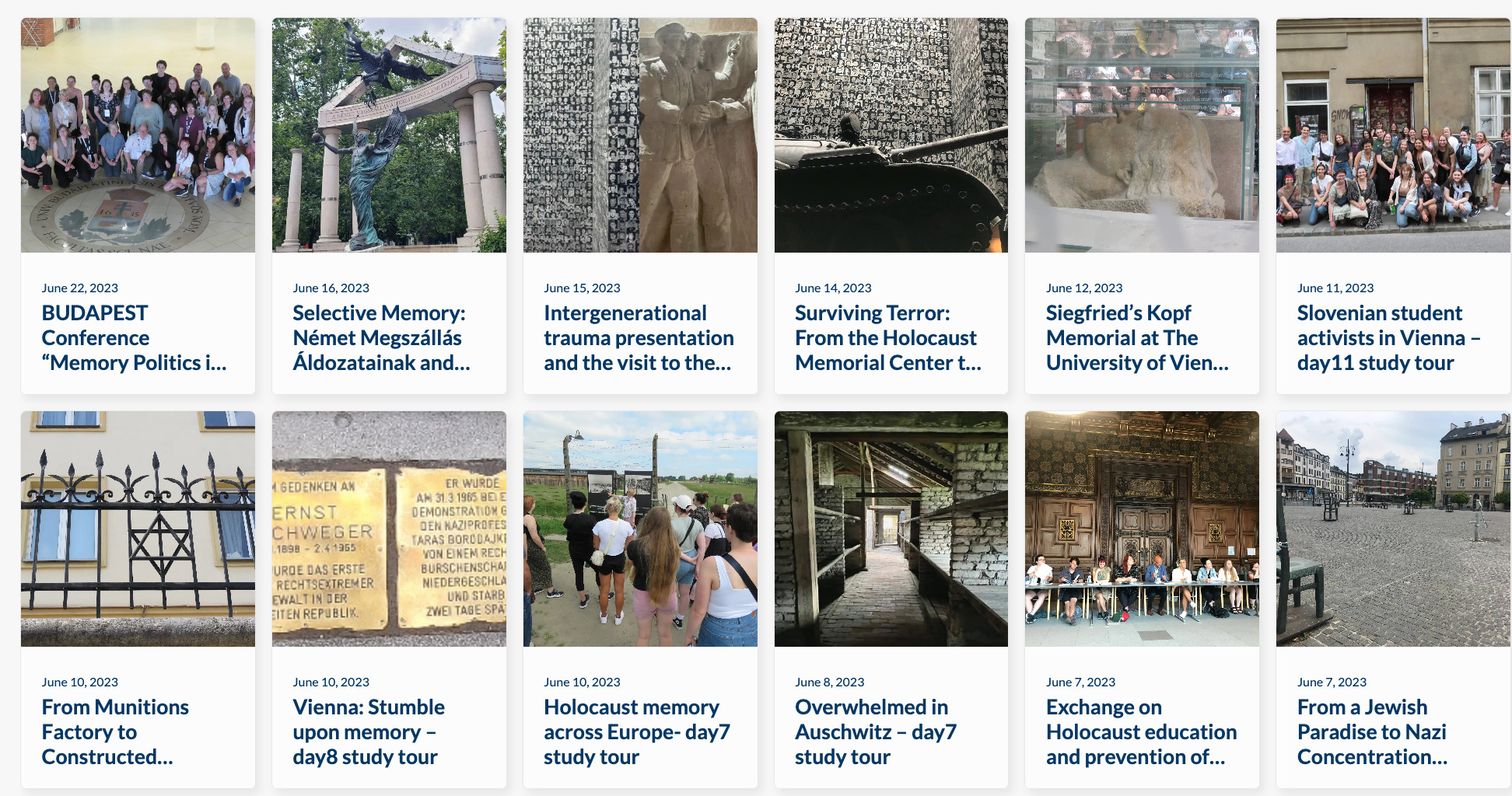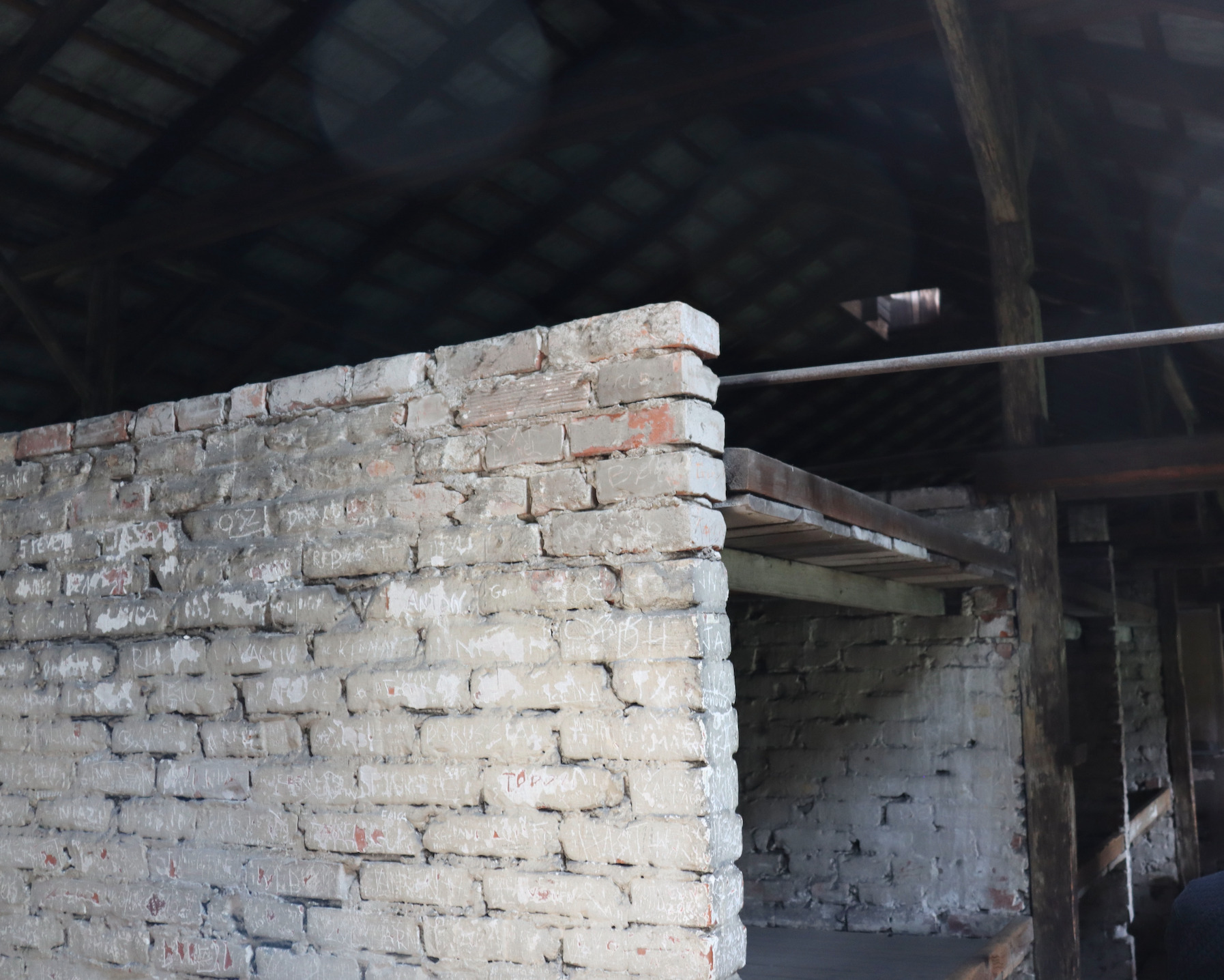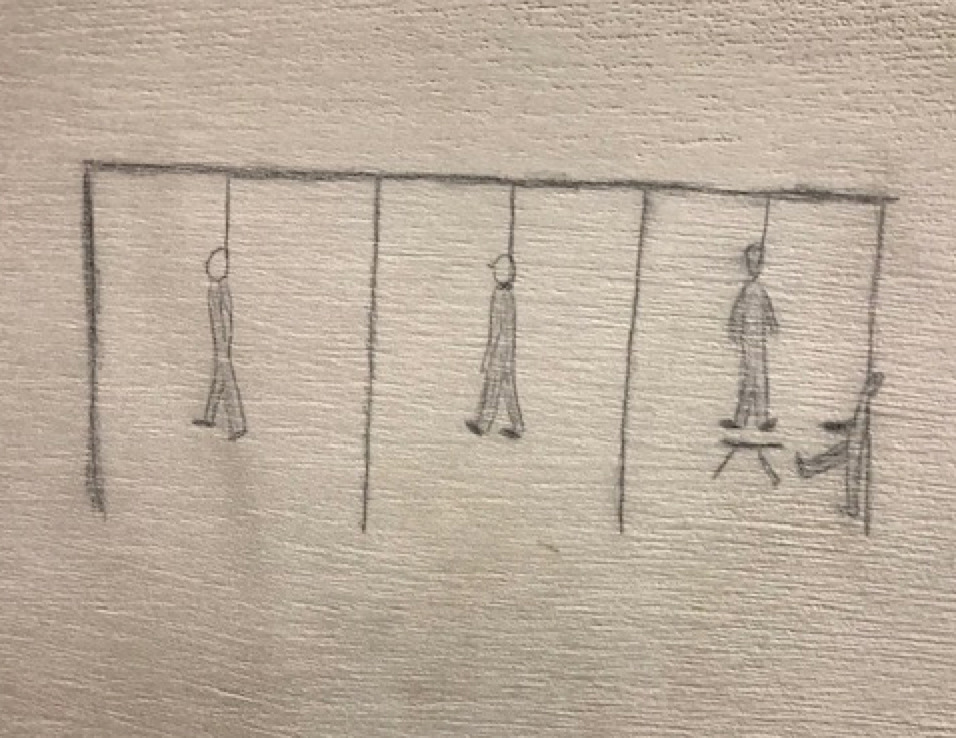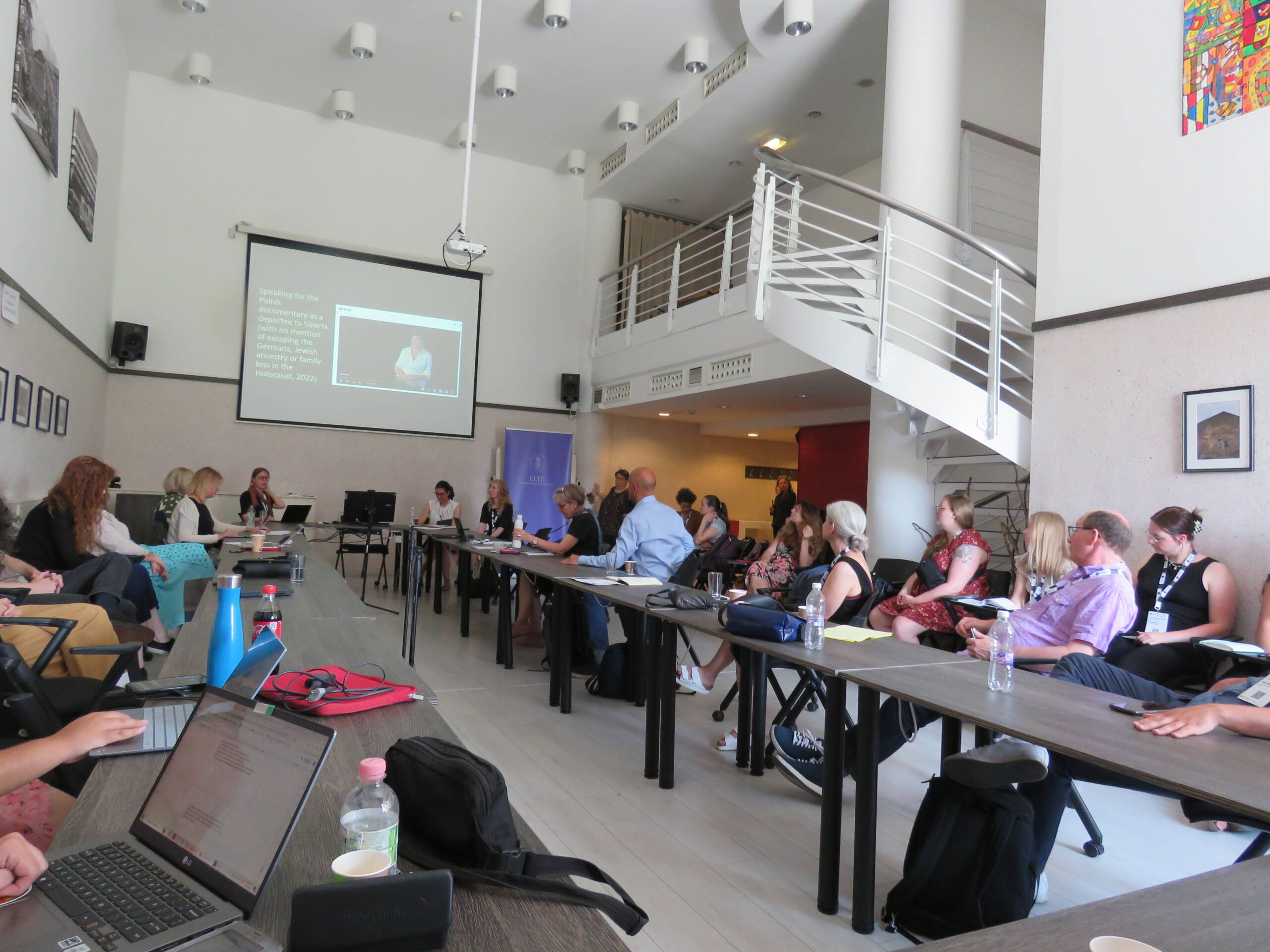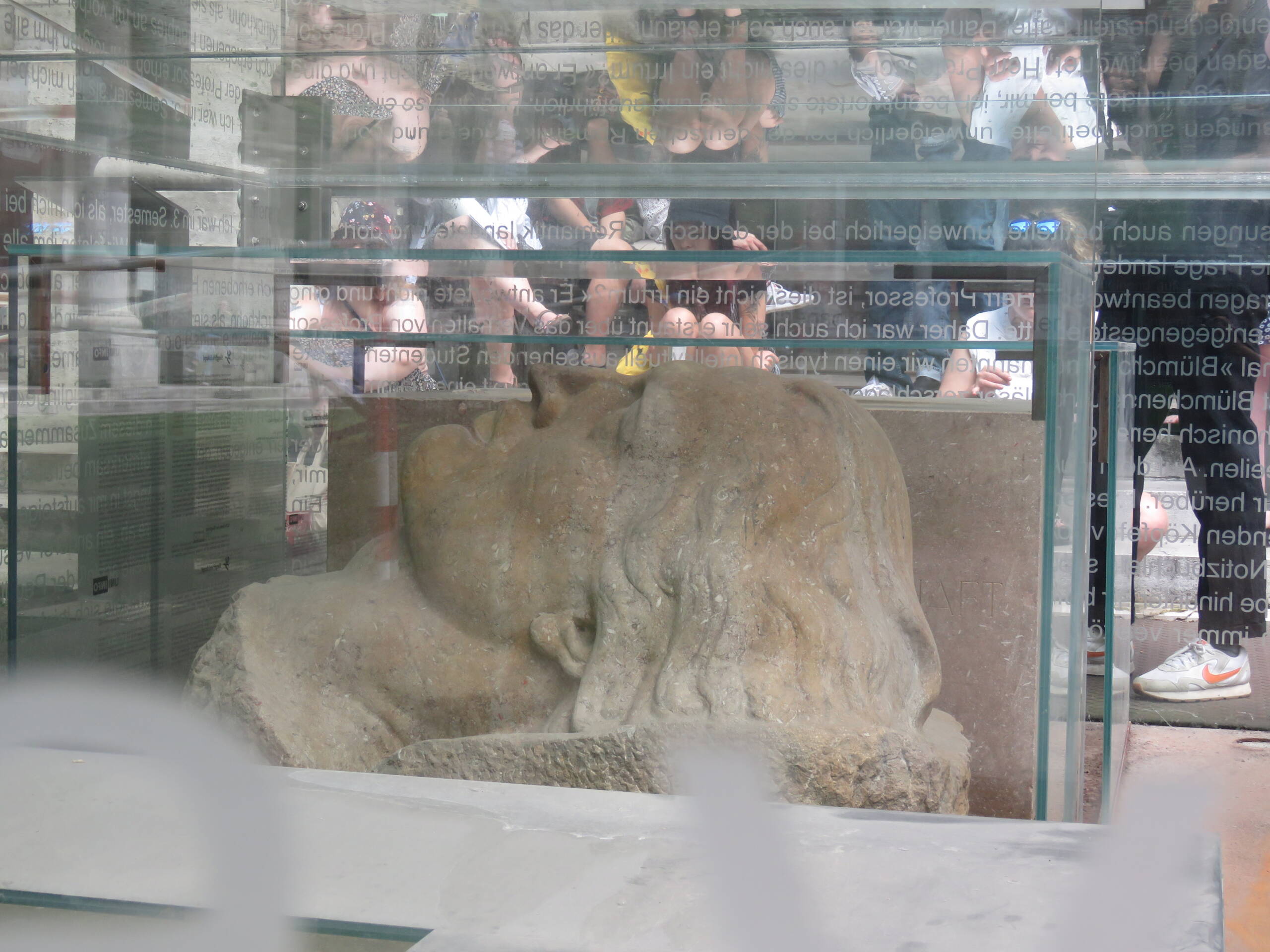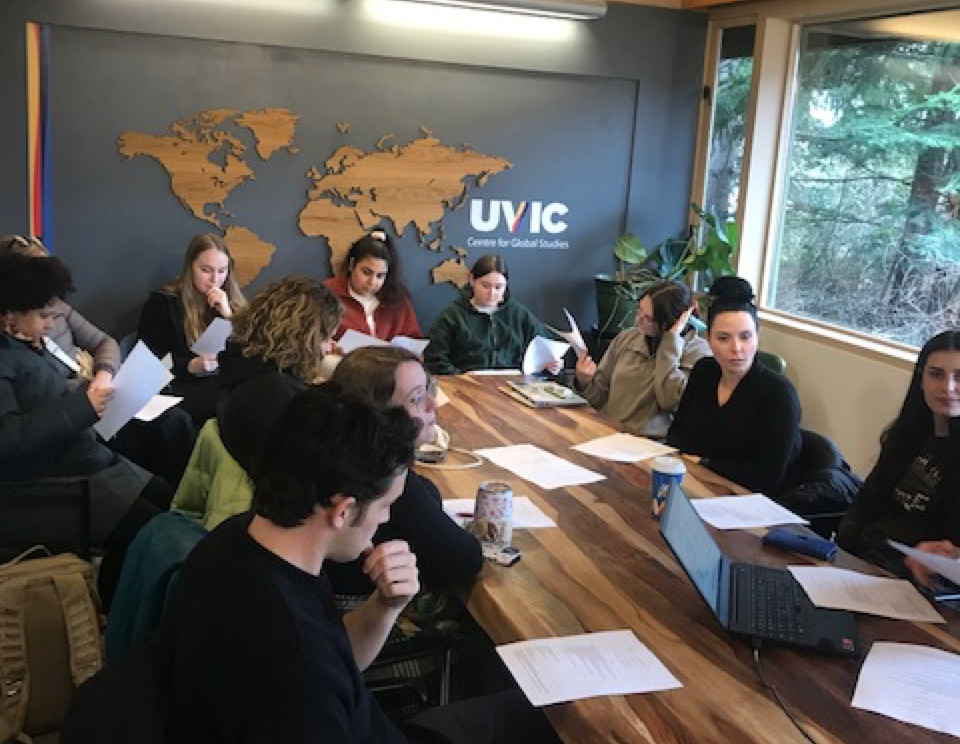Auschwitz-Birkenau
Our day began with a short bus ride to Auschwitz-Birkenau which was established in 1940 and was the largest Nazi-operated extermination camp (Auschwitz, 2022). The camp held upwards of 40 sub-camps with the intent to exploit and kill its prisoners. It was shocking to see exactly how large Birkenau is (more than 400 acres) with all its red brick buildings and barbed wire fences. A general sense of grief was felt amongst our group. Learning about the Holocaust and being on this memory politics study tour for almost a week now, did not make it any easier to enter Auschwitz-Birkenau.
Our guide met us outside the gates and immediately led us up the stairs of one of the guard watch towers. She explained that before we went any further, it would be useful to see the guards’ perspectives of the camp and explore the juxtaposition between the guards visual experiences and that of the prisoners. After all, the majority of our day was spent viewing the barracks, sanitary facilities, gas chambers, and crematories from the perspective of the camp’s prisoners — from the ground.
Ellie’s experience and reflection:
9,000 steps into the guided tour, our guide led us to gas chambers II and IV. The now destroyed brick buildings lay at the back perimeter of the camp; nearly 1km from the main watch tower. Our group stands and holds a moment of silence as we surround the 4 graves standing in the place of the gas chamber. A red rose sits atop the middle grave, under it, the message carved reads:
“To the memory of the men, women, and children who fell victim to the Nazi genocide. Here lie their ashes. May their souls Rest In Peace.”
For the first time that day, I felt a tidal wave of emotions sweep through me. It finally hits me where I am standing, what I am reading, and the genuine acts of horror committed here. To the left of the gas chambers there are 3 photos which depict evidence of the burning of bodies. The first photo, which I saw for the first time the day previous in Auschwitz 1, is a blurry photograph of naked female prisoners being dragged to the gas chambers. My heart drops as I immediately recognize the picture. I find it hard to comprehend the emotions that are bubbling their way to the surface. Looking at this picture I feel the sense of fear, vulnerability, and despair that these women must have felt. I think that picture will be forever burned into my memory.
I once heard someone describe their experience visiting Auschwitz as “there was life before Auschwitz, and there was life after. ” I think that is an excellent explanation of the intense emotional experience that visiting a former death brings. I recognize my experience at Auschwitz-Birkenau as life-changing and will keep the experience and emotions with me as I continue to study memory politics and apply what I learnt throughout my life.
Simrat’s experience & reflection:
I’m not sure what I was expecting when I walked into Birkenau as the previous day had already been so emotionally taxing. Yesterday we toured Auschwitz I and heard the live testimony of Birkenau survivor, Zdzisława Włodarczyk who was a child when she and her family were uprooted from their home and sent to the camp. Włodarczyk had described her experience living in the barracks and having to squish 5, 6, sometimes even more people in one bunk. But actually walking into the barracks and seeing the bunks people were forced into with my own eyes made my heart drop a little further into my stomach. These bunks, these barracks, this entire camp should have never been built. I felt so angry and upset standing in the barracks.
Additionally while in the barracks, our guide stated that prisoners would often fight for the top bunks because it would save them from the bodily fluids that would seep through the upper bunks to the lower ones. I was a little confused by what she meant. But, when she further explained, I was horrified. It’s widely known that people were often on the brink of starvation in these camps. But as our guide explained, what isn’t always so obvious is that extreme malnourishment often results in many people being unable to control their bodily fluids. Being on the top bunk saved people from sleeping in the mess of others. As I pictured this in my mind, I got upset. I couldn’t comprehend how or why someone could treat others so poorly. To starve them, to force harsh labour on them, to not give them proper access to sanitary facilities, and most importantly to kill them for something beyond their control. What was the meaning for all of this mistreatment? Did Hitler and the Nazis really believe they were creating a better world by forcing terrible living conditions on people and by exterminating them?
I knew that the Third Reich stripped millions of people of their homes, families, and lives. And that it dehumanized Jews, Sinti and Roma, Asocials, and many other victim groups simply because they did not fit the Nazi vision of an Aryan race. However, getting the opportunity to visit Auschwitz and see evidence first hand of how prisoners were treated is something that will stay with me forever. We need to work together to ensure another tragedy like this never happens again. We need to do better.
Students reflecting on visit to Auschwitz-Birkenau June 7th, 2023
Ellie Hiotakis, Sociology BA student, University of Victoria
Simrat Otal, History major & Political Science minor BA student, University of Victoria
